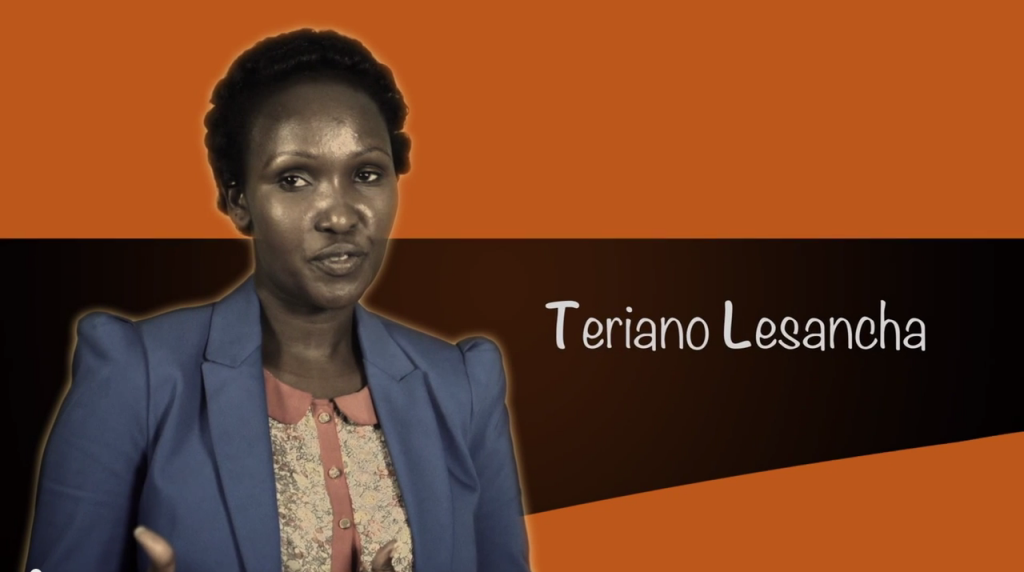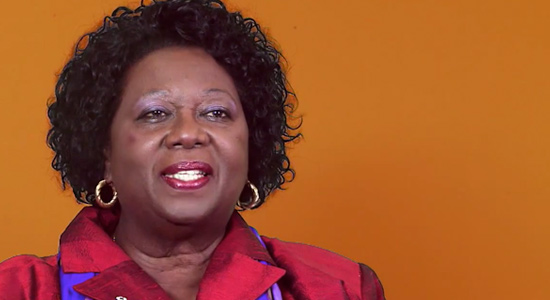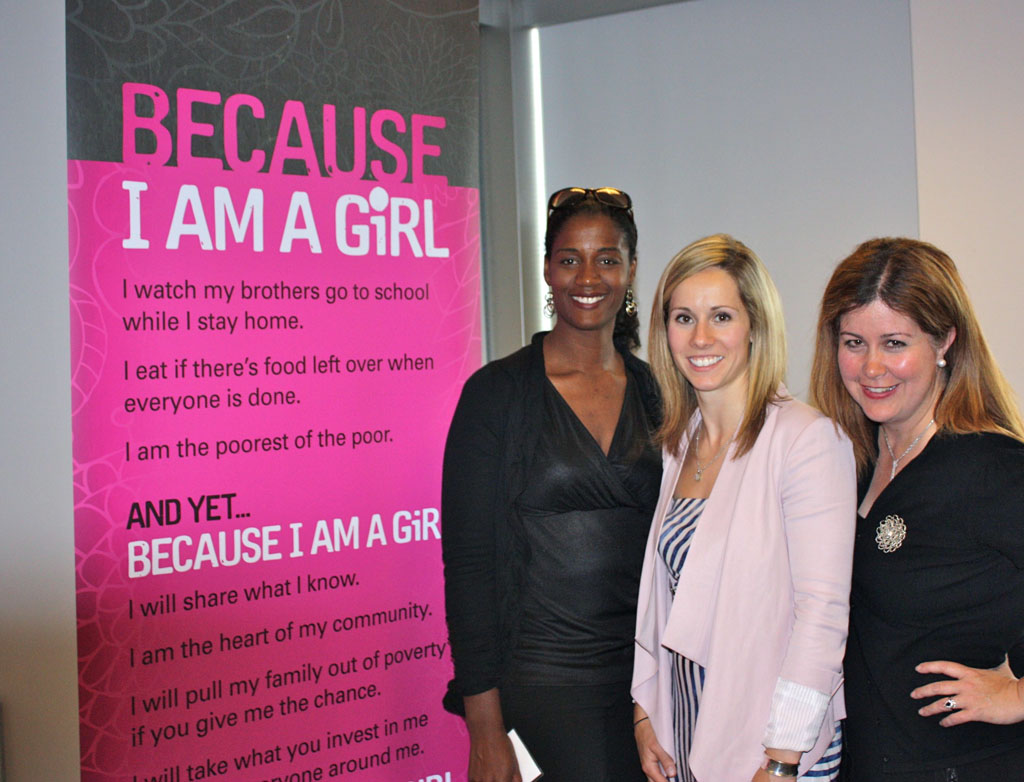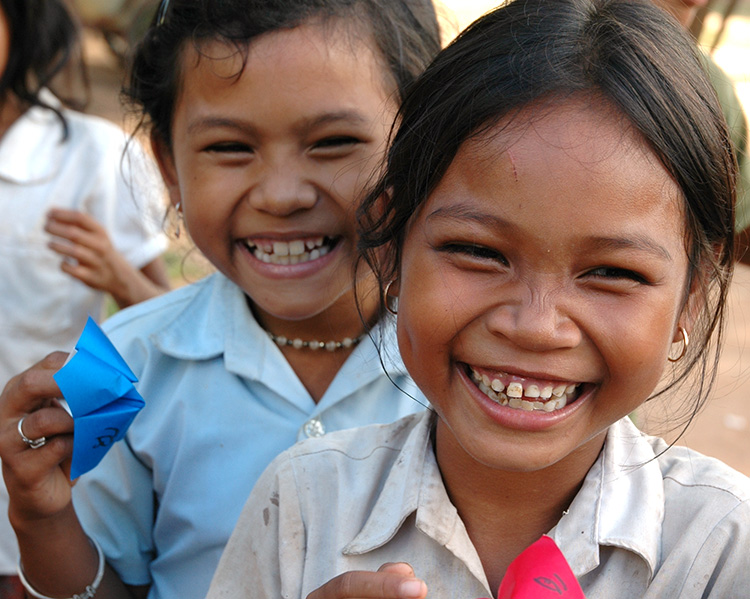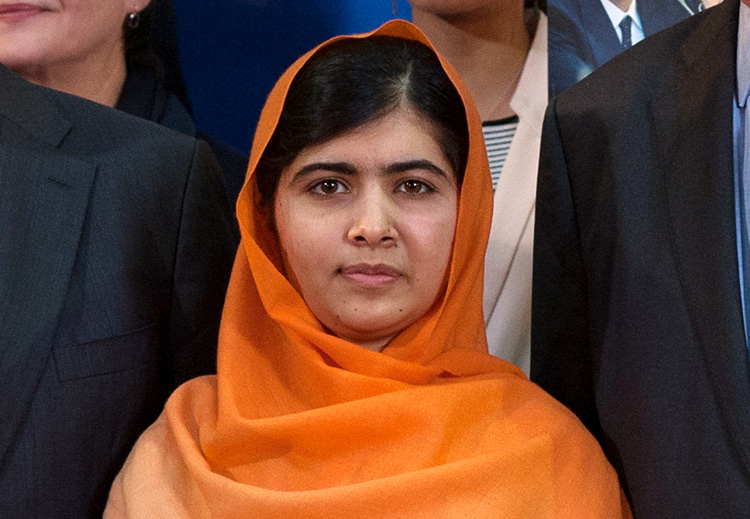Educator Tools

 Ask yourself:
Ask yourself:
- Why is it important that all girls and boys receive an education? What impact does education have on our lives?
- How is gender equality a development issue that benefits families, communities, and nations?
- What is the gender gap and how are girls and women around the world affected by gender inequality?
- How are boys affected by the limitations of classic male stereotypes?
- How does gender dysphoria affect people and what difficulties do they face? What can we do to help gay, lesbian, bisexual, and trans people feel respected and included?
In this chapter we’ll examine many gender issues. We’ll look at the mistreatment, lack of education, and inequality of girls and women around the world. We’ll also educate ourselves about gay, lesbian, and trans communities. Our research includes the #MeToo movement along with the rise of women in leadership. It is important to understand how boys and men may repress their feelings in order to live up to societal stereotypes. You will learn about the difficulties experienced by many young girls and women in Africa, the Middle East, and Asia who undergo the cultural practice of female genital mutilation (FGM). There are ways to make a difference, but first we have to become informed about the world.
The Harsh Reality
Gender inequality and discrimination are human rights issues that affect many girls and women around the world. The facts are staggering. According to Plan Canada Because I Am A Girl:
- One billion people worldwide live in extreme poverty, 70% of whom are girls and women.
- Malnutrition is a problem that affects girls three times more than boys.
- Education is a basic human right, but 65 million girls have not been to primary or secondary school.
- Domestic responsibilities, child marriage, pregnancy, accessibility to school, and poverty are just some of the reasons girls do not attend school.
Critical to the development of gender equality is education. When girls go to school and stay in school, the world around them is affected in positive ways. Research shows that when girls are educated, they gain independence, have greater access to job opportunities, invest their acquired income back into their families and community, and in turn are able to stop the cycle of poverty in their lives. By supporting the advancement of girls and women through education, the health and well being of the human population improves and communities thrive.
 Definitions
Definitions
Gender Equality: refers to the equal treatment of women and men socially, politically, and economically so that they have equal access to education, work opportunities, equal pay, the right to vote, access to medical services, and many other basic human rights.
Gender Discrimination: negative attitudes, beliefs and behaviour directed toward a person because of their gender or perceived gender, based on social, cultural, and political norms and practices.
Gender-Based Violence: is a form of violence, inflicted upon a person based on gender or perceived gender, such as sexual assault, rape, abuse in the home, forced marriage and pregnancy, human trafficking, and forced abortion.
Women’s Rights: promotes the social, economic, and legal equality between women and men.
ACTION 1
Discuss
Investigating the Gender Divide
We should understand the scope of gender issues on a global scale and how girls are impacted. The many problems that affect girls on a daily basis may prevent them from going to school and receiving an education.
A. How aware are you of the problems that girls face?
With a partner, access the Girls’ Rights Factsheet. After learning about the issues affecting girls around the world, discuss the following questions:
- What were you most surprised about?
- What would you like to know more about?
- How does this compare to your experience as a student and citizen of Canada?
iSearch
The class divides into groups of six. In the group each student chooses to be a specialist on one topic from the list below. Join your specialist groups i.e. the ones that have chosen the same topic. Your group uses various resources to research your topic: internet, books, newspaper articles, magazines, videos, etc. After you have completed and documented the research on your topic, rejoin your original group to share your findings. The goal of this activity is to learn a significant amount of material through collaboration and sharing.
B. Here are the topics to investigate:
- Gender discrimination (social and cultural beliefs, economic reasons)
- Child marriage (childbirth, household duties, death)
- Poverty (malnutrition, contaminated water, money for clothing/school supplies)
- Gender-based violence (sexual harassment, rape, human trafficking)
- Accessibility (lack of government schools, no toilet facilities at school, tuition fees)
- Child and domestic labour (care for siblings, earning money for family)
Discuss
C. After sharing what you’ve learned in your group, discuss these questions as a class:
- Is there anything else that impacts a girl getting a good education that was not covered in the groups? For example: war, conflict, racism, religious discrimination, homophobia, etc.
- This is not just a problem for girls in developing countries. How are girls and women in Canada impacted by the gender divide? Consider the six categories to help you.
- Can you recognize ways that girls have greater disadvantages and challenges compared to boys?
- How are boys also impacted by some of these issues?
ACTION 2
iSearch
Malala Yousafzai: Education and Women’s Rights Activist
At age 17, Malala Yousafzai is the youngest recipient of the Nobel Peace Prize. She shared the 2014 prize with Kailash Satyarti for “their struggle against the suppression of children and young people and the right of all children to education.” The Nobel Committee recognized simultaneously a Pakistani and an Indian, a Muslim and a Hindu, a woman and a man, an adolescent and a 60-year-old–their symbolic message of equality for all!
Malala Yousafzai has become an international leader for education and women’s rights, after surviving an attempt on her life by the Taliban in Pakistan. Use Malala’s story and passion for education as a foundation for your own exploration into the importance of education.
A. Who is Malala Yousafzai and why is she such an important figure in the 21st century?
- Why did the Taliban attempt to kill Malala?
- How did they know about her?
- Why is Malala’s story so important?
B. Watch Malala’s September 2015 address to the United Nations
- What vision does Malala see for the future of education?
- What are her greatest hopes?
- What is her call to world leaders and governments?
- What does she hope will happen in developing nations and communities?
C. Watch Malala’s interview with Christiane Amanpour , 2013
D. Do you value your education and would you risk your life for it? What are you gaining the most from your education right now? How would you be impacted if you were forbidden from learning?
- With a partner, create a media representation of what education means to you and why it is important. Write a letter or poem, create a spoken word performance, or produce a video, poster, or work of art, or any other means for expressing your thoughts on education.
- Each group of partners will present their media representation to the class.
- After each presentation, reflect on what your peers have shared. Allow time for questions and constructive comments.
- As a class decide how best to share your thoughts with others, such as displaying them on the class or school website.
- Create a blog on education as it pertains to your community. What are the essential needs of students (both girls and boys)?
ACTION 3
Discuss
Education Matters
“The surest way to keep a people down is to educate the men and neglect the women. If you educate a man you simply educate an individual, but if you educate a woman you educate a family.”
–Dr. J. E. Kwegyir Aggrey, a visionary Ghanian educator (1875–1927)
Read the above quote by Dr. J. E. Kwegyir Aggrey, and take a few minutes to consider and answer the following questions:
- Why does a community suffer if only boys and men are educated?
- How does educating a woman impact her life?
- How does educating a woman impact her family and community?
- How is gender equality a development issue?
- What do the authors mean by economic development?
- How does education help reduce poverty?
- What does girls’ education have to do with social and health benefits?
- What are some of the ways that gender equality can be attained?
With a partner discuss the above quote and questions and then discuss as a class.
- Investigating sources about Teriano Lesancha
- Watch the following video about Teriano Lesancha
- Read How Cows Figured in a Kenyan Woman’s Toronto Education (Toronto Star, Tuesday, October 10, 2013)
- Read Young Woman Dares Maasai Culture with Big Bold Dreams (Toronto Star, Friday, July 26, 2013)
Discuss
- What obstacles did Teriano Lesancha have to overcome to go to school?
- How did she manage to conquer her adversity?
- In what ways has her community been impacted by her education?
- How has Teriano been able to bring economic growth and development to her community?
A. There are many important organizations, such as the SupaMaasai Foundation, that are making enormous strides to improve communities around the world. The purpose of this next activity is to work in partners or small groups to research an organization of your choice. You can choose from the list below or make a different selection.
- Look through the organization’s website to discover the type of work they do and where they do the work.
- What is the mission of the organization?
- How is this organization making a difference in the lives of girls and women? For example: do they support education, economic development, health care, safety, etc.?
- Who runs the organization? An individual or board of directors? Who are they?
- Does the organization run campaigns? If so, what are they?
- In what ways can people get involved in the organization?
- How is the money generated and used by the organization to do the work they are doing? Is it cost effective?
- Extend your research beyond the website to discover more about the organization. What do you find? Is some of the information negative? Why?
Possible organizations to investigate:
KIVA: supporting job creation around the world with a $25 loan
CARE: addresses root causes of poverty to support people and communities
PLAN INTERNATIONAL CANADA: initiative to advocate for girls’ rights and gender equality
KASHF FOUNDATION: microfinance program to support the financial growth of women in Pakistan
THE HUNGER PROJECT: committed to ending hunger worldwide
THE MALALA FUND: to support girls going to school
GLOBAL GRASSROOTS: creating change in the lives of girls and women in Africa
SHARED HOPE INTERNATIONAL: eradicating the human trafficking industry
RIGHT TO EDUCATION PROJECT: supporting children’s education through a human rights approach
GLOBAL GIVING: a solution based organization that raises money for a variety of causes
B. Once you and your partner or small group completes your research, transcribe the information in the form of a mind map. Think of the mind map like a visual story. How can your map be read so that others can gain information about your organization? Use chart paper or mural paper. This activity will conclude with a gallery walk to view the mind maps hung on the classroom walls.
C. Watch this video of a speech called The Power of Women by Priyanka Chopra (Unicef). Reflect on what you have learned and how you plan on continuing to contribute to girls’ education and human rights issues in the future.
Gender Identity
Language Matters
Language plays a big part in revealing systemic discrimination and prejudice. When we use correct words to define someone, we are showing them respect. Therefore, learning what is appropriate from community members is necessary. One way to ensure that all young people feel understood and accepted is for all of us to learn the appropriate terms and definitions, as well as not using terms in a derogatory sense.
ACTION 4
Discuss
Discuss with a partner.
- What new words have been circulating to refer to the LGBTQ community?
- Are there any words that you don’t understand?
- Does everyone identify with the ever-expanding acronym 2SLGBTQ+?
A Subject in Flux
As we know, language keeps changing. While developing our understanding about the sexes and sexuality, new words and definitions are introduced into society. It is important to know that not all gays and lesbians identify with the larger acronym LGBTQ or the ever-expanding 2SLGBT+.
Most gays and lesbians are not confused about their gender identity. They are men or women and they are simply same-sex attracted. The transgender spectrum is another subject entirely, despite the attempts by trans activists to combine it all together as one subject.
The problem of gender dysphoria has nothing to do with homosexuality necessarily, although many young trans people are in fact gay. A growing number of medical professionals believe that trans youth can resolve their gender dysphoria by coming to terms with, and accepting, their homosexuality. If our society could become more accepting of homosexuality and bisexuality gay, lesbian, bisexual, and trans youth would be happier and healthier people.
 Definitions
Definitions
Sexual Orientation
This is a scientific term for an individual’s physical and romantic attraction to other individuals.
Gay
A man who is attracted to other men. Sometimes gay women (lesbians) use the term too.
Lesbian
A woman who is attracted to other women.
Bisexual
A person who is attracted to both men and women.
Transgender
A broad term used to describe the experience of individuals who have a gender identity that differs from their sexual anatomy.
Queer
An adjective used by people, particularly younger people, whose sexual orientation does not classify as exclusively heterosexual (e.g. queer person, queer woman).
Intersex
An umbrella term which describes people born with reproductive or sexual anatomy and/or a chromosome pattern that cannot be classified as typically male or female.
Asexual
People who are not sexually attracted to anyone.
Heterosexual
People who are attracted to people of the opposite sex (also referred to as straight).
Homophobia
Fear and hatred of people attracted to the same sex.
ACTION 5
Do
Write and Discuss
The teacher prints out copies of the reaction heel in the Teaching Tools section.
Fill out your own reaction wheel, and answer the following questions:
- Which of the terms listed above have confused you in the past?
- Were you uncomfortable to ask someone what label they use to identify themselves? Why?
- Do you feel it’s important to respect people’s label, identity, and pronoun?
- What difficulties may arise when honouring people’s label, pronoun, or identity?
Then share and discuss in a small group of four.
ACTION 6
Discuss
New Legislation in Canada to Protect the Rights of Transgender Canadians
Transgender Rights Bill C-16, Global Legal Monitor, US Library of Congress
In 2017, the Canadian Human Rights Act and Criminal Code was updated according to Bill C-16.
Discuss the debate on this issue and the consequences.
#MeToo
ACTION 7
Do
In a small group, discuss and respond with three points for each of the following questions.
- Why is there a need for the women’s movement and feminism?
- In general, what effects do sexual harassment and misconduct have on society? Provide examples.
- Do men/boys have a different role to play than women/girls in fighting sexual harassment?
Choose a group representative to present the points to the whole class, followed by a class discussion. After the discussion, each group can co-write three paragraphs, thoughtfully answering each question.
Sexual Harassment
Sexual Harassment is an umbrella term that refers to a range of unwanted behaviours. This includes non-physical harassment, including suggestive remarks and gestures, or requests for sexual favours. Physical harassment includes touches, hugs, kisses, and coerced sex acts. It can be perpetrated by anyone, but is particularly challenging when the perpetrator is of a higher status than the victim, and is exerting their power over the other in a sexual manner. Examples would be someone who is the victim’s boss, teacher, professor, a celebrity, politician etc. Sexual harassment in the workplace can be perpetrated by anyone – a manager, a colleague, a client. The victim or perpetrator may be male or female and it does not need to occur inside the office.
Have you heard of Anita Hill?
In 1991, in the United States, lawyer and academic Anita Hill, broke new ground for women’s rights by testifying against her boss, Justice Thomas, who was her superior at two federal (American) agencies: The Department of Education, and The Equal Employment Opportunity Commission. Until then, a woman testifying against her boss for issues of sexual harassment was heard of rarely if at all. Justice Thomas denied the accusations, but Ms. Hill put the subject of sexual harassment on the public agenda.
ACTION 8
Discuss
Discuss the following questions with a partner, or with the class.
- Do you find it ironic that the organization that received more than 12,000 allegations of sexual harassment each year was run by Justice Thomas? How could a person separate their work identity from their personal actions?
- Why do most people (both women and men) experiencing such harassment never tell anyone about it?
- Is it effective to simply avoid the harasser, deny or downplay the gravity of the situation, or attempt to ignore, forget or endure the behavior?
Watch Anita Hill’s pivotal testimony in 1991 and then continue your discussion:
Anita Hill’s Testimony
A Timeline of Sexual Harassment and the Women’s Movement
Have a look at this interactive timeline with valuable information about the fight women face regarding sexual harassment: Timeline – a short history of the long fight against sexual harassment
ACTION 9
Do
The #MeToo movement has been pivotal in changing the way men behave, and the way women are treated in the workplace. Anita Hill’s heroism inspired women to find the courage to stand up for their rights. Yet women, for the most part, tend to keep quiet about sexual harassment. Why do you think that is?
The power structures in society have been shaken by the #MeToo movement particularly, in the media. It all started when Harvey Weinstein, a powerful film production executive, was criminally charged in New York City with sexually assaulting two women. After those first two brave women shared their painful experiences, many more women confessed to the predatory nature of Weinstein’s dealings with them. Once Weinstein’s shameful behaviour was widely known, he was fired from his own company. This event empowered women who had remained silent about the abuse they were regularly facing in the entertainment industry, and in all industries for that matter.
Tarana Burke, founded the #MeToo movement in 2006 to support survivors of sexual harassment and violence. In October 2017 the hashtag was tweeted by actress Alyssa Milano, encouraging other women to post their own painful stories of abuse on social media. This movement continues to have potentially far-reaching effects as women start to rise to power. Once their behaviour became known, many men were either fired or resigned. Interestingly, forty-three percent of their replacements were women which is a giant step for the women’s movement.
Source: MeToo Replacements
You can share your opinion about the #MeToo Movement. Watch the video, read the article and add comments if you would like to contribute: What is your reaction to the MeToo Movement
For the impact in Canada, look at the Canadian Women’s Foundation website.
ACTION 10
Do
Make a list of what makes women different from men in school and in the workplace, if you see any differences.
Answer these questions:
- Do you think women lead differently than men?
- When hiring, will women hire and promote more women within their industries? What impact will this have on our world?
- Will these changes affect the way we do business, in general?
Research political leaders who are women and the recent changes in leadership worldwide. Then answer the following questions:
- How will women change the cities they live in?
- Do you have any predictions about how the world will change because of the rise of women in positions of power?
- What are your feelings about these changes?
Watch this informative TedTalk about unconscious gender bias, and the neuroscience behind it. Gender equity is not just a women’s issue, it’s a human rights issue. Awareness, without judgement, is key to removing the limitations we place on girls and women: The Neuroscience of Gender Inequality
The Media’s Influence on Society’s Views of Women and Men
ACTION 11
Discuss
Write and Discuss
Fill in the following table with your answers then share and discuss with a partner using the questions below the table.
| Your favourite movies as a child | The main characters | Qualities and specifics about main characters | Was this character discriminatory? |
|---|---|---|---|
- What do you notice about your list? Is there a pattern regarding how either men or women were represented in these movies?
- Have you ever noticed how sexualized animated female characters can be?
- What is patriarchy?
- Did you notice the distinction between the way boys/men and girls/women are represented in animated shows?
- How are things changing now that attention has been drawn to women’s concerns and the #MeToo movement?
- How do film and TV influence the viewing audience and our society?
- Have things changed? That question is worth researching.
Actress Geena Davis made a presentation in Toronto in September, 2018 about her documentary film This Changes Everything which is about gender representation in media. In this insightful interview with CBC’s Tom Power, Geena Davis shares her perspective on the way women are represented in movies (with specific attention to children’s movies).
ACTION 12
Discuss
In the interview with Geena Davis, CBC’s Tom Powers asks an interesting question, “What impact do fictional stories have on society?”
In a small group, discuss your answers to this question. In addition, answer the following:
- Why do studies show that girls’ self-esteem goes down when they watch TV, while boys’ self-esteem goes up?
- Can you give an example, from a movie or TV show you’ve seen, where you think that this would be the reaction?
The movie MissRepresentation was written, directed, and produced by Jennifer Siebel Newsom. This entertaining and provocative movie effectively shows the way girls and women are portrayed in the media and the world. Watch the trailer on YouTube and think about how far women have come in finding true equality in the world.
For additional research, visit the MissRepresentation website with a link to stream the movie, along with lesson ideas, and discussion points.
ACTION 13
FGM – Female Genital Mutilation
This is a centuries-old cultural practice that mutilates the external female genitalia of girls putting them at risk for serious infections, severe bleeding, problems urinating, fistulas, and death. It is practiced in some African, Asian, and Middle Eastern countries as well as within diaspora communities in the West. It is illegal in Canada.
Do
You can learn more about this dangerous practice and how people are working to stop it in Canada.
There is hope for women’s rights however. According to this Toronto Star article, progress is being made very slowly and Canada is showing the way: Progress on Women’s Rights
Boys, Men, and Emotions
As you may have noticed, the strong, silent type is perceived as manly and this has been the masculine ideal for a very long time. Think about characters like James Bond, Arnold Schwartzenegger (The Terminator), Jack Reacher (Mission Impossible), and Mad Max, to name a few. The goal is to embody physical strength, aggression, and rugged sexuality, while projecting the view that violence is manly, danger is exciting, and women are only either objects of ridicule or desire.
These manly characters reinforce the stereotype that experiencing emotions is feminine and not masculine. It is becoming evident however that having the courage to face our emotions takes courage. When we deny our emotions, by hiding them from ourselves and from others, we are limiting our own self-awareness and self-knowledge.
All humans cry. When boys are told to “suck it up” and hold in their tears, they are forced to suppress their feelings. This kind of repression can have a negative impact on their mental and emotional health. Many therapists who counsel men find that their patients struggle with anxiety and depression, which connects to their inability to understand and process their emotions. The childhood messages they received are damaging them in ways we are only now starting to notice. This enforced habit can lead to issues with rage and unhealthy coping mechanisms like over-drinking and taking drugs. One statistic that supports the argument that it is dangerous to repress one’s emotions is that suicide rates are four times higher among men than women.
The movie The Mask You Live In explores America’s narrow definition of masculinity and the harm it causes boys and men. For additional research, visit the Representation Project website with a link to stream the movie, along with lesson ideas, and discussion points.
Actor Justin Baldoni gives an impactful TedTalk on why he’s done trying to be man enough. In this impassioned plea to both men and women, Justin asks men to find the courage to be vulnerable. With humour and honesty Justin goes deep into the topic. Justin Baldoni Redefines Masculinity
ACTION 14
Discuss
- How do the male students in your school behave differently than the female students?
- Do you witness males admitting their emotions in front of you?
- What is the response, generally, when males share their feelings?
- What is hypermasculinity? (Search the term if you are not familiar with it)
- Are some emotions considered masculine, and others feminine? Why do you think that is?
- Why do some males feel attacked by feminism?
- What can we all do, in school and society, to ensure that males can reveal their emotions without being teased?
Further Resources
Video on female genital mutiliation.
Read However Long the Night by Aimee Malloy
Aimee tells the story of American exchange student Molly Melching who when in Senegal learned about the practice of genital mutilation on young girls. The book spans 40 years and shares Molly’s journey through Africa where she became a social entrepreneur and an activist for women’s rights.
Book excerpt: Exclusive excerpt from However Long the Night by Aimee Molloy
Michael Kaufman, The Time Has Come: Why Men Must Join the Gender Equality Revolution (Toronto: House of Anansi Press, 2019)
Every effort has been made to gain permission from copyright holders to reproduce borrowed material. The publishers apologize for any errors and will be pleased to rectify them in subsequent reprints and website programming
Educator Tools


